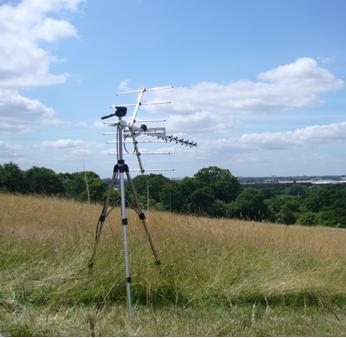Digital Video Broadcast
 Novel techniques for broadcast transmitter networks that will minimise the complexity and power consumption of end user equipment are being considered. These techniques; Transmitter Diversity and Low Cost On-Channel Repeaters will improve reception in areas of poor coverage such as for mobile reception, indoors and sparsely populated or obscured locations. Test service scenarios are being developed to illustrate the benefits of the technology so that effectiveness can be researched in a variety of service and terrain scenarios using purpose built test systems.
Novel techniques for broadcast transmitter networks that will minimise the complexity and power consumption of end user equipment are being considered. These techniques; Transmitter Diversity and Low Cost On-Channel Repeaters will improve reception in areas of poor coverage such as for mobile reception, indoors and sparsely populated or obscured locations. Test service scenarios are being developed to illustrate the benefits of the technology so that effectiveness can be researched in a variety of service and terrain scenarios using purpose built test systems.
DVB-T, DVB-H, DAB are key radio broadcast network technologies which are expected to complement emerging technologies such as WiMAX and its derivatives in future 4G networks. These technologies use Orthogonal Frequency Division Multiplexing (OFDM), which is a technique that distributes data over a large number of carriers spaced apart at precise frequencies providing frequency diversity.
Complexity and power consumption of personal receiving devices can be optimised by improving the transmission of signals in non line of sight cluttered environments using Transmit Diversity and Low Cost Repeaters. Transmit Diversity exploits the statistical nature of fading due to multipaths and reduces the likelihood of deep fading by providing a diversity of transmit signals; multiple signals are transmitted in such a way as to ensure that several signals reach the receiver each with uncorrelated fading. Resultant digital broadcast networks would have fewer transmitter sites and thus be more cost-effective and have less environmental impact. Transmit Diversity is more practical than Receive Diversity due to the difficulty of locating two receive antennas far enough apart in a small mobile device.